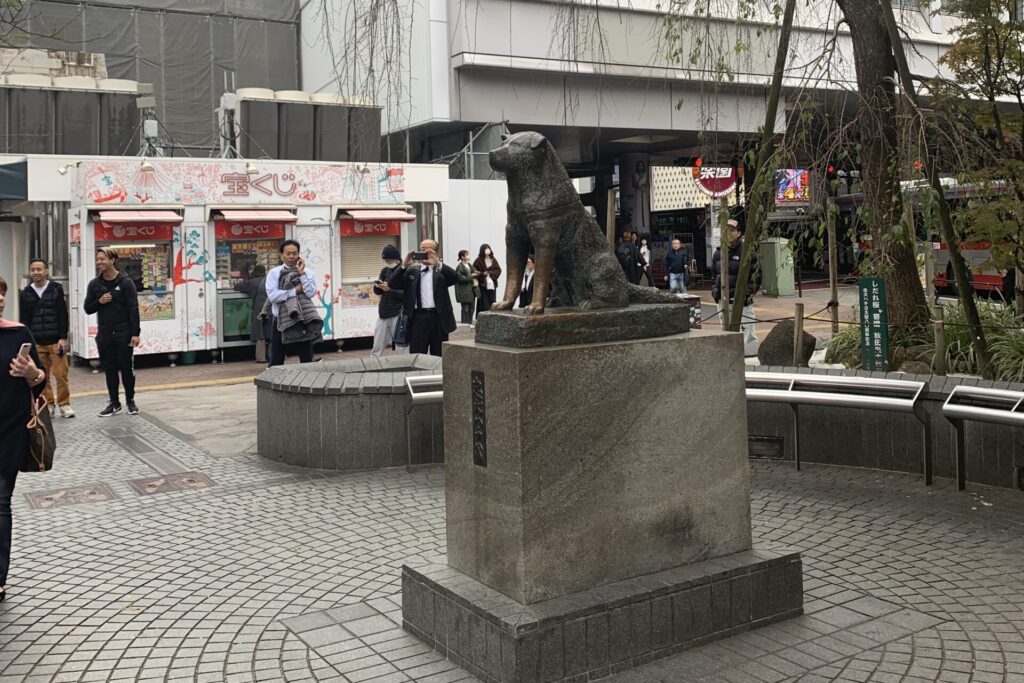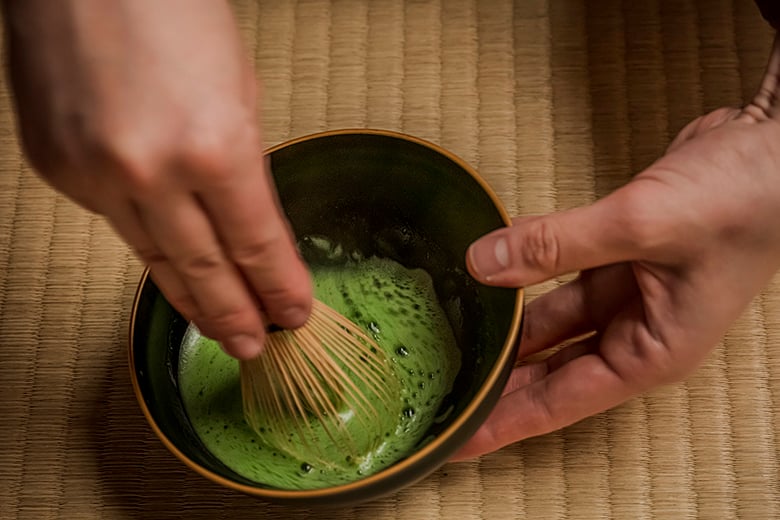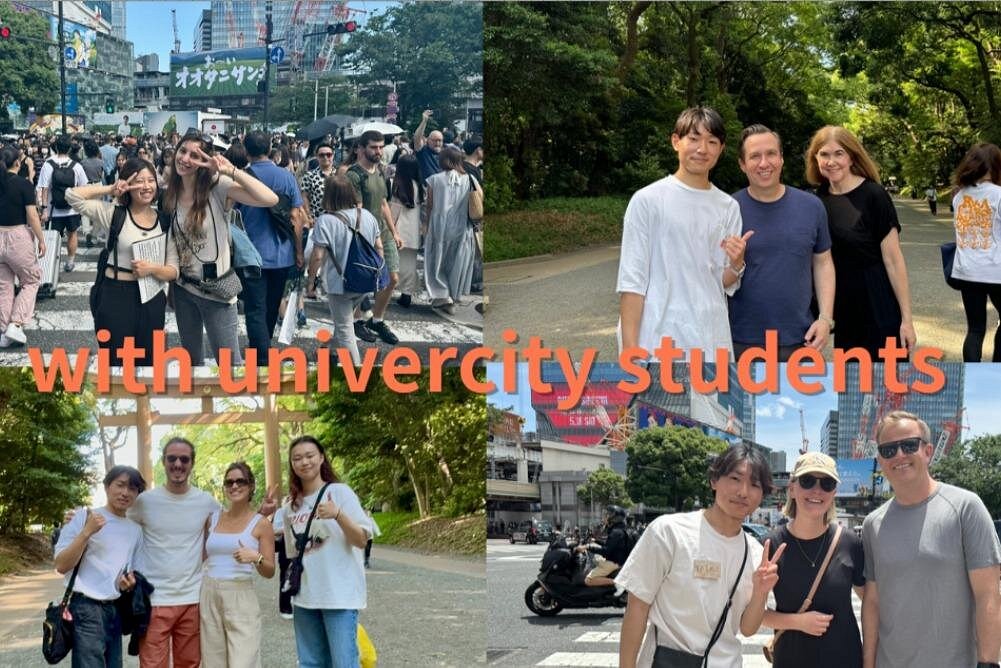
Guide international tourist from the most futuristic district of Shibuya in Tokyo to the historical sites that shaped modern Japan!
Hey, have you heard about the Hachiko statue in front of Shibuya Station? It’s like my distant relative, a proud Akita dog. This great guy, it seems, spent nearly 10 years faithfully waiting at Shibuya Station to welcome back a beloved owner who had passed away. Proud to be part of the same Akita dog family, you know?
If you’re interested, check out the 2009 American movie “Hachi: A Dog’s Tale.” It’s a heartwarming story. And if you ever want to see the real deal, head over to the National Museum of Nature and Science in Ueno, Tokyo .
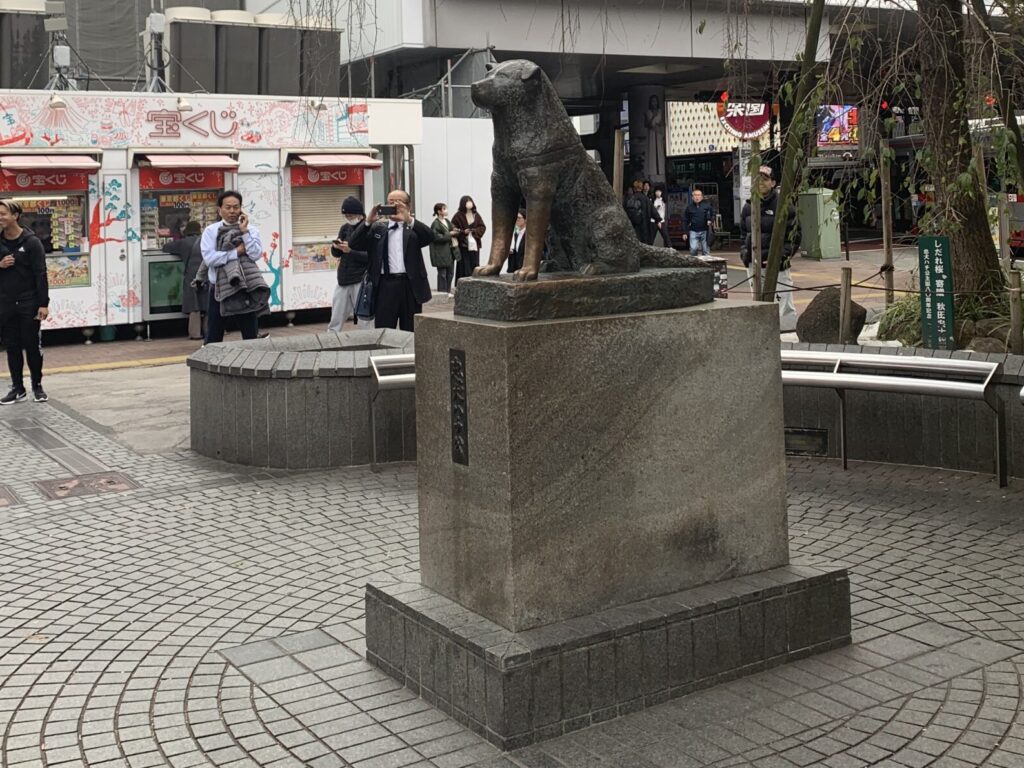
A. Start Walking from Shibuya Hachiko
Strolling through the city begins at Shibuya Station (marked as A on the map). Immediately, when you exit from the Hachiko Exit of Shibuya Station, you’ll find the Hachiko Statue (marked as B on the map). It’s easy to spot, as there’s usually a long line of foreign tourists trying to take photos in front of it. While it used to be famous as a meeting spot, it’s now more renowned as a tourist attraction.
C. Shibuya Scramble Crossing:
If you turn in the opposite direction, you’ll come across another famous Shibuya landmark, especially for foreign tourists – the Scramble Crossing (marked as C on the map). Moreover, if you want to get a bird’s-eye view of this iconic crossing, consider going up to the rooftop of the building across the street, “Crossing View & Rooftop Lounge MAG8” at Magnet by SHIBUYA 109. It might be a great idea for those who want to see the scramble intersection from above.


D. Casual Eateries Shibuya Yokocho:
Cross the Scramble Crossing and head towards the elevated railway on your right. As you go under it for a bit, you’ll soon spot a unique building on your left. This is MIYASHITA-PARK, home to Shibuya Yokocho (marked as D on the map).
It’s a friendly spot for both locals and travelers, with a variety of regional Japanese, Korean, and Chinese cuisine restaurants. In addition, they even provide menus with pictures, making it easy for foreign tourists. Let’s take a break or have lunch here. However, be mindful not to overindulge, as there’s more to explore on today’s walk.
PR Discover Vegan Japanese Food
Vegan Friendly Sushi & Okonomiyaki Shibuya Night Foodie Tour presented by Viator;
Detour Point ❶ : The Tokyo Toilet Project at Jingu-Dori Park
Before reaching to Jiunzan Chosenji, next destination. (Chosen-Temple), you’ll come across a small park, featuring a public toilet designed by the renowned architect Tadao Ando. Take a moment to check it out! This toilet is part of Shibuya Ward’s “The Tokyo Toilet Project.”
The issue of public toilets not being particularly clean is a global concern, and until recently, using them in Japan was also often limited to very urgent case. However, the cleanliness of Japan’s current public toilets is something the country can proudly showcase to the world. Many foreign people might be surprised that public toilets are equipped with toilet paper as a matter of course.


E. Ancient Remaining Buddha Cluster:
Once you pass through “Shibuya Yokocho,” if you continue straight along the road, you’ll reach Meiji Shrine. However, consider taking a little detour – the stone Buddha cluster at Jiunzan Chosenji (Chosen-Temple)(marked as E on the map).
It might be hard to believe, but a hundred years ago, this area was just paddy-fields and farms, and there were many stone Buddhas along the roadside. Today, these stone Buddhas have been gathered and enshrined.
To see them, walk through the temple grounds and head towards the cemetery where you’ll find the stone Buddha cluster further inside. Meanwhile, keep in mind that this is a cemetery, so out of respect for the departed, please explore quietly and with a sense of reverence.
PR Explore Traditional Japan
Tea Ceremony in a Special Tea Room at a Cha-Kaiseki Restaurant in Tokyo —With One-Soup, Three-Dish Lunch presented by Wabunka;
F. Holy and Sacred Area Meiji Shrine, Tokyo’s biggest Power Spot:
Turn left at the large intersection, and after a short walk, you’ll find yourself at Harajuku Station. Cross the bridge over the railway tracks, and you’ll arrive at Meiji Shrine (marked as F on the map).
Dedicated to Emperor Meiji, who reigned five generations ago. It honors the pivotal figure of the Meiji era, which laid the foundation for modern Japan. As you pass through the First Torii Gate and stroll along the approach, it feels like entering a true natural forest.

Since its completion in 1915, it’s hard to believe that this serene environment was once a completely artificial forest. While walking along the paths inside the shrine, consider closing your eyes from time to time, tuning in to the sounds of the surroundings. It’s a space that makes you forget you’re in the bustling metropolis of Tokyo.
(Photo; Meiji Jingu Garden in the summer of 2025. Come early summer, the purple iris flowers will be in full bloom!)
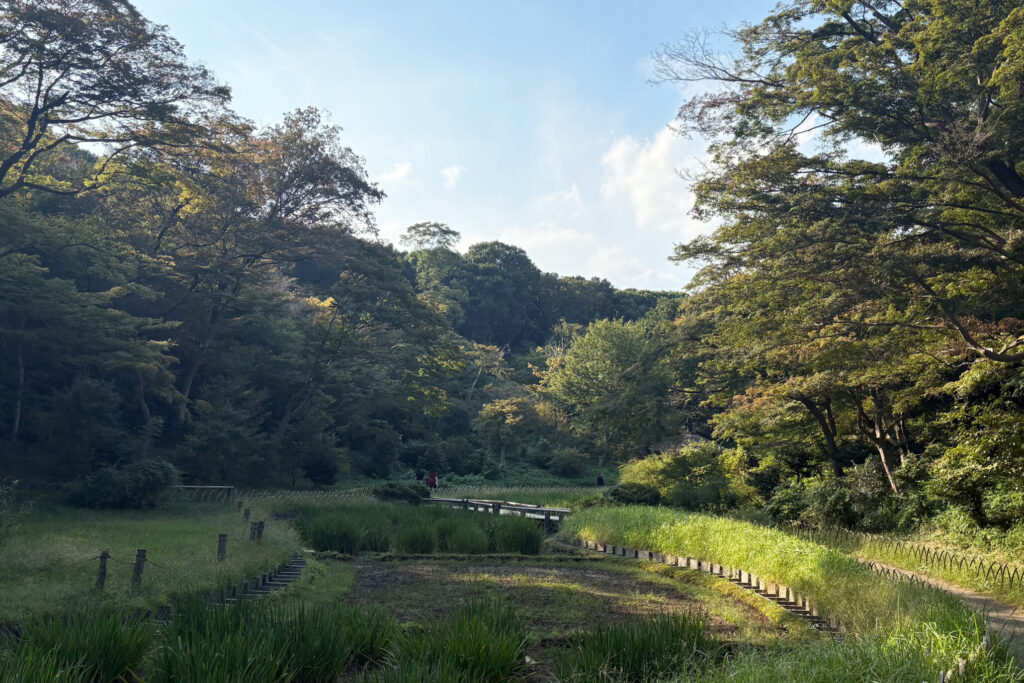

Detour Point ❷ : Buzzing and Charming Takeshita Street
Takeshita Street is already such a famous tourist spot that almost doesn’t need any more words. It seems to be a hub for Japanese youth fashion, and not just current trends but a bit of future fashion too.
However, walking down Takeshita Street might surprise you with an intriguing mix of various elements. It might be a bit of an odd comparison, but if the Nakamise Street in front of Senso-ji Temple (Asakusa) creates a charming chaos with a focus on Japanese tradition, Takeshita Street seems to be crafting an appealing chaos with a focus on the future, much like the bustling town in front of Meiji Shrine.
Well, let’s not dwell on complicated thoughts too much. Instead, grab something delicious from the eateries along the street and enjoy a leisurely stroll!
PR Feel Vibe Shibuya
Tokyo Shibuya, Harajuku, and Meiji Jingu Youth Culture Tour presented by Viator;
Detour Point ❸ : If you interest in Ukiyo-e, Ota Memorial Museum of Art
If you’re interested in Ukiyo-e, a visit to the Ota Memorial Museum of Art might be worthwhile. Ukiyo-e is a form of popular art that flourished among the common people during the Edo to Meiji periods, and it had a significant impact on European artists in the 19th century. Colorful woodblock prints are well-known worldwide.
Here are approximately 15,000 works, including woodblock prints and hand-painted paintings. The collection provides a well-balanced overview of the historical evolution of Ukiyo-e. The museum is also known for its excellent preservation of artworks.
This museum operates with various special exhibitions and does not have a permanent collection on display. If you plan to visit, it’s recommended to check the museum’s official website in advance for information on the current exhibitions and any other relevant details.

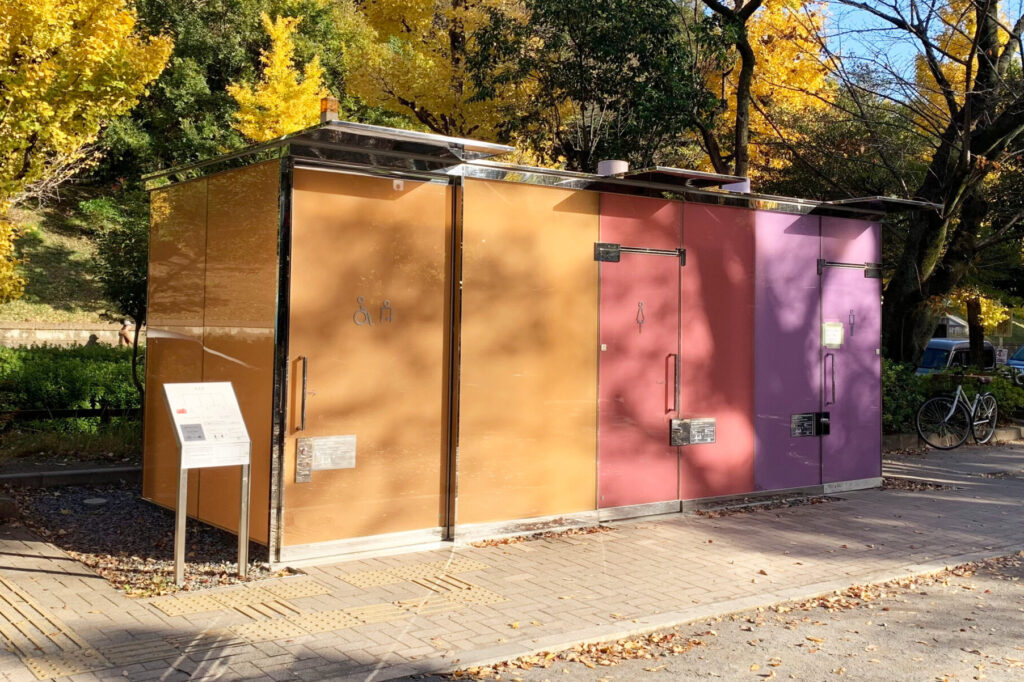
Detour Point ❹ : The Tokyo Toilet Project at Yoyogi Fukamachi Small Park
This transparent toilet, which became a hot topic, is part of the Tokyo Toilet Project in Shibuya.
Designed by architect Shigeru Ban, it may seem like it was made just to be quirky and attention-grabbing, but it actually serves a practical purpose: allowing users to check for safety and cleanliness before entering. Plus, at night, it lights up like a lantern, adding a charming glow to the park.
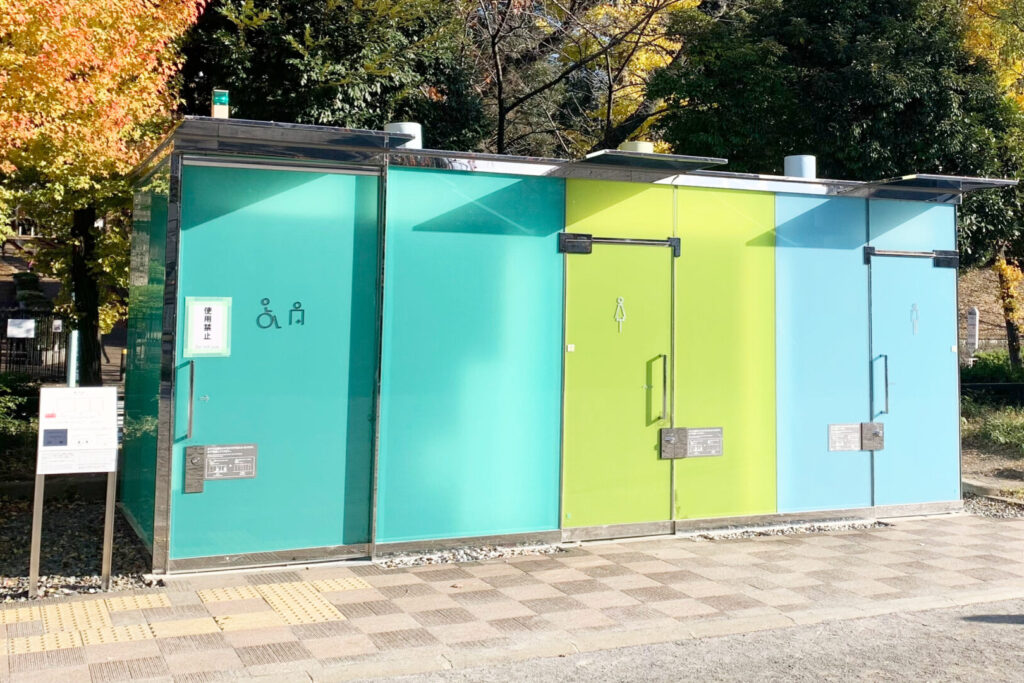
Detour Point ❺ : The Tokyo Toilet Project at Haruno-Ogawa Community Park
About 300 meters north of Yoyogi Fukamachi Park, you’ll find a counterpart to the toilet mentioned above. If you’d like to enjoy a different take on the design with contrasting colors, be sure to stop by this one as well!
However, due to functional issues, the glass of both public toilets does not turn transparent from mid-October to mid-May. If you want to fully experience the true value of these unique toilets, it’s highly recommended to visit between June and September.
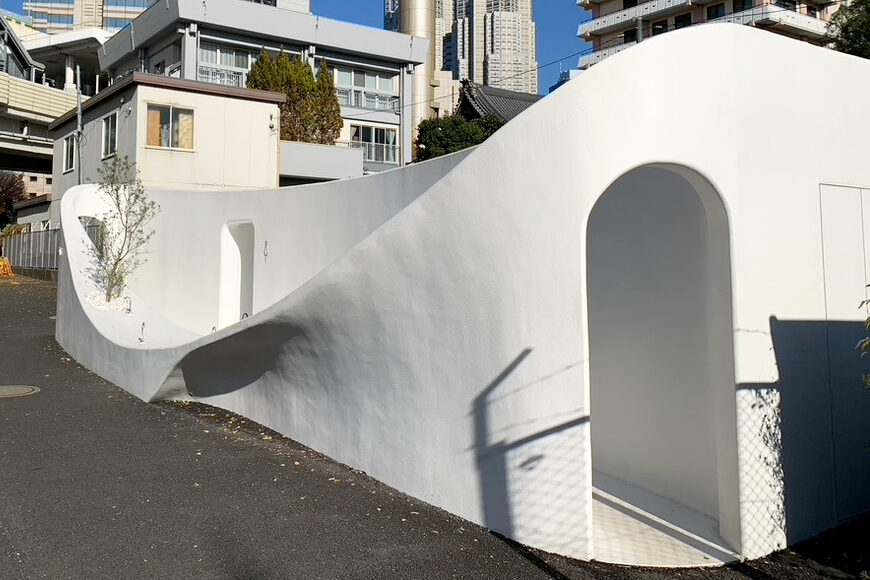
Detour Point ❻ : The Tokyo Toilet Project at Nishi-Sando
How many people would immediately guess that this building, designed by Sosuke Fujimoto, is actually a public toilet? According to him, the idea was to create a “fountain in the city” — a place where people could wash their hands and spark small connections within the community.
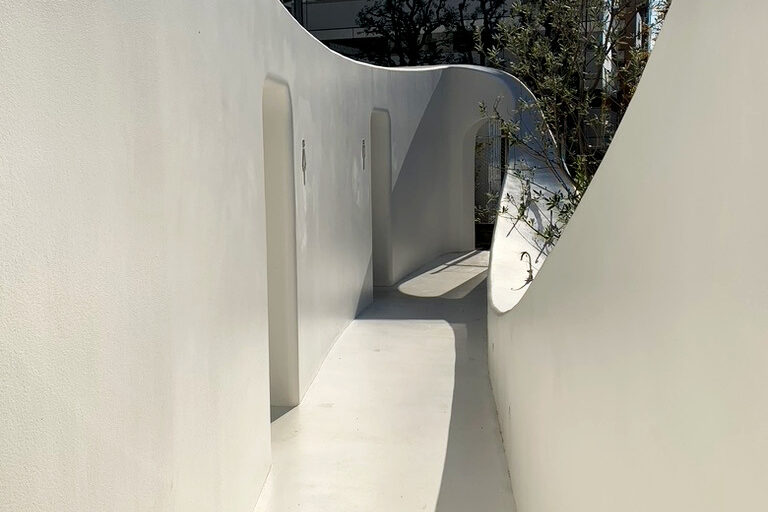
The front features a gently curved recess lined with faucets, making it easy for anyone to wash their hands while out and about.
Situated along a bustling roadway, this building feels more like a graceful piece of art than a public restroom.
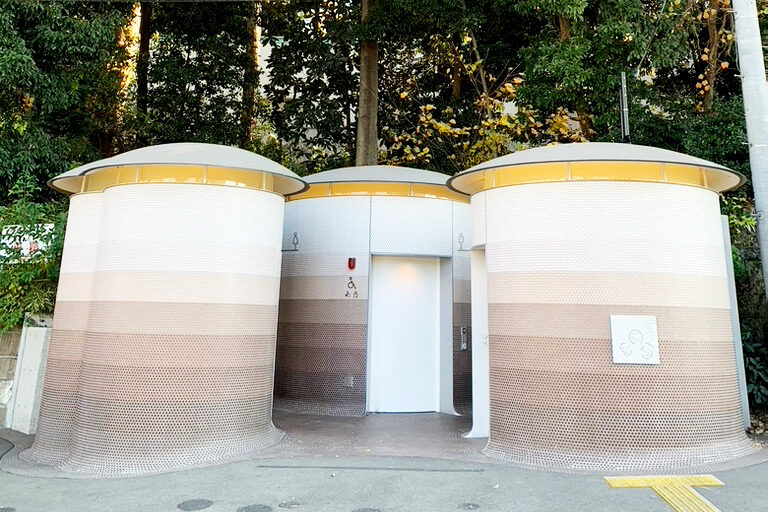
Detour Point ❼ : Shibuya Public Toilet Project at Yoyogi Hachiman
Buildings, resembling three mushrooms, blends beautifully with the forest in the background. Step inside, and you’ll find a clean, comfortable public restroom.
Designed by Toyoo Ito, this toilet features spacious interiors, thoughtfully crafted to ensure all users feel at ease.
Even from a distance, the building harmonizes with its surroundings and has such an inviting design that you almost feel bad using it as a restroom!
Detour Point ❽ : Cozy and casual coffee stand, Little NAP Coffee Stand
If you’re planning to visit the public toilets mentioned earlier on a cold winter day, why not stop by this trendy coffee stand, Little NAP Coffee Stand, along the way? There’s usually someone waiting at this popular spot, and it’s conveniently located on the back road of Haruno-Ogawa Community Park (Behind Detour Point ❺).
Leaning against the park’s fence, you can enjoy a warm coffee and fully experience the charm of a Japanese winter.


The stroll from Shibuya Station to Meiji Shrine is about 2.6 km. For me, it’s a walk in the park, but it might be quite a stretch for pity human being on two legs. Inside the shrine territory, there are cafes and such, so taking some leisurely time there is a great idea. Alternatively, heading back to Takeshita Street in front of Harajuku Station and replenishing your energy in the lively city atmosphere is also a good plan.
As for the evening, why not head back to “Shibuya Yokocho” for a round of drinks? It’s not a bad way to cap off the day!


